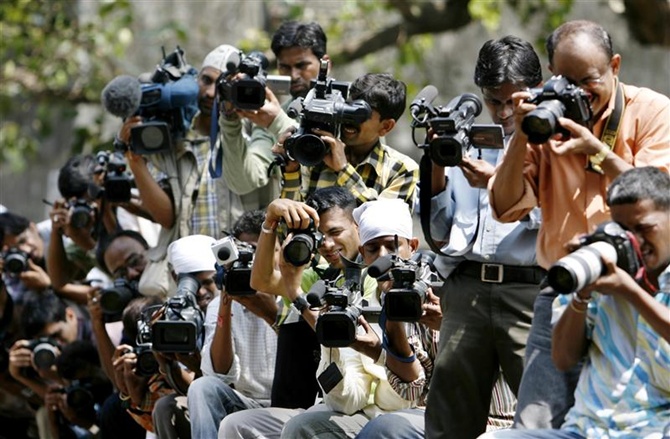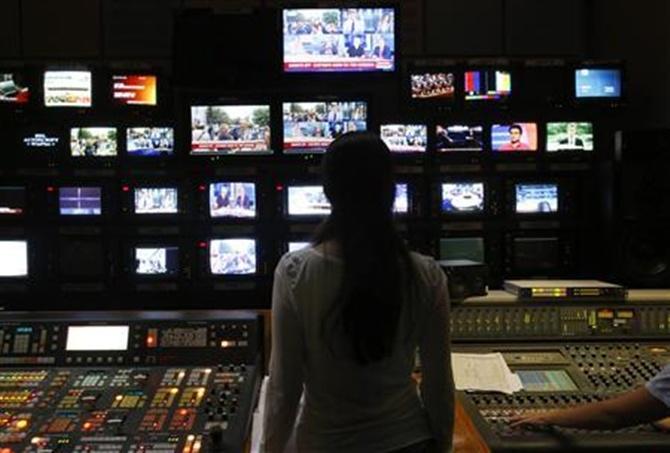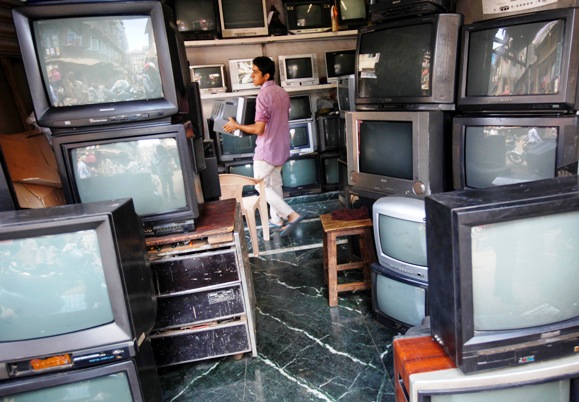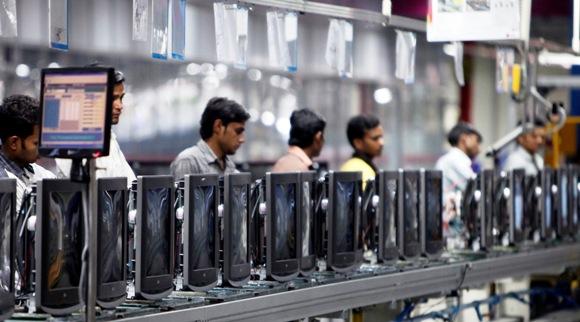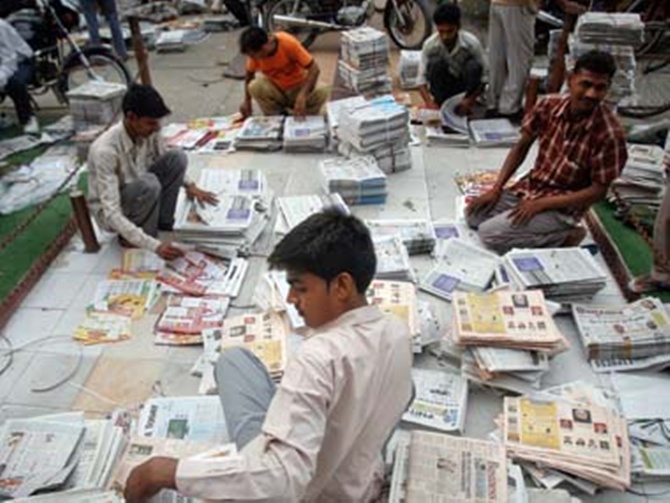 | « Back to article | Print this article |
FDI will push media firms to clean up their act
Dodgy or not, most media owners do not spend adequate money on training their journalists or exposing them to global standards.
Indian news media has become a joke. When Madhuri Dixit dances to "TV pe breaking news hai mera ghagra (my skirt is the breaking news on TV)" or the BBC does a show on paid news, it says one thing loudly - our reputation is mud, inside and outside India.
That is precisely why we should welcome more foreign direct investment or FDI in news.
Ever since Information and Broadcasting Minister Prakash Javadekar took over in May this year, there has been talk of raising the FDI limit in news media, from 26 to 49 per cent and maybe 100 per cent.
Please click NEXT for more...
FDI will push media firms to clean up their act
In retail, pharmaceuticals, manufacturing and telecom among other sectors, strategic foreign investment has brought three benefits - better technology, processes and training, more jobs and better returns.
When GE or Intel set up operations here, it forced Indian firms such as Infosys or Wipro to compete with the best and then go global.
But Indian media is yet to produce its BBC or Al Jazeera or The Economist - a brand that is born in India but reaches the world successfully.
This is because it has not seen global competition on home ground. And it never had the incentive to improve on its own.
You could argue that private news is barely a decade old and is very competitive.
India has a world-beating 135 news channels and 94,000 registered publications.
Please click NEXT for more...
FDI will push media firms to clean up their act
But this competition is a mirage because media in India is owned largely by like-minded owners. Most have done precious little to build processes and institutions that strengthen journalism and media.
Take news channels for instance - more than one-third are owned by politicians, real estate owners and random people who use them as tools of favour, fear or influence, pouring large amounts of black money into them.
Of the over 94,000 registered publications, only 1,000 are members of the Indian Newspaper Society - the key industry body. Many of the remaining are registered because some local printer wants to make an extra buck through extortion or wants an ego boost.
Dodgy or not, most media owners do not spend adequate money on training their journalists or exposing them to global standards.
If content is king, there is precious little owners and editors do to invest in it.
Please click NEXT for more...
FDI will push media firms to clean up their act
Editors train reporters on the run and sometimes don't even bother with that. In over 20 years as a professional journalist, I have not been asked to sit in a single training programme.
The need to refresh oneself professionally, through a press fellowship in Cambridge or by writing a book, were things I chose to do and for which I took time off.
The cumulative result of media owners with dodgy credentials and poorly-run operations is what you see on air today as dozens of channels rush to fill 24 hours with ill-trained people.
There is an ignorant, shrill and judgemental air about news television in India.
You could turn to newspapers. But can you trust them? Anything could be paid news.
Please click NEXT for more...
FDI will push media firms to clean up their act
This then makes a mockery of the information needs of 1.2 billion Indians. If news is the intellectual fodder for a nation, then we are eating junk.
The solution seems simple - better training, editors who edit and institutions that force standards of behaviour and so on.
But none of this is happening on the ground - it hasn't for years. Allowing foreign investment will push media firms to clean up their act.
It will make them compete for good writers, reporters, technicians, managers and put in place processes and systems that allow for good journalism to flourish.
There are several arguments against more FDI. It will kill diversity, influence voters, cause instability and so on.
These made sense in the sixties when India was a closed, insecure economy and country. It no longer is.
After 22 years of liberalisation one thing is clear, to thrive in India, foreign companies have to go desi with a vengeance like McDonald's or LG did.
That is true for education and entertainment too. They have a huge amount of influence on our minds and yet 100 per cent FDI has been allowed in these.
Rupert Murdoch's Star has had success in India only by becoming Indian in every sense of the word - management and programming included.
Please click NEXT for more...
FDI will push media firms to clean up their act
Ditto for Sony, Disney or Viacom. This in turn helped domestic Indian firms such as Zee to compete with global standards right from the beginning.
As for the diversity argument - anyone who has grown up in the one-channel-one-newspaper era would disagree.
From Zee Cafe and TLC to National Geographic and Colors, Indian viewers have more choice than they ever did.
Lastly, India is one of the largest internet-using countries in the world. We are already reading and watching news from around the world.
It would increase the choice greatly if Indian consumers could see the same quality in locally-produced news; strategic foreign investors can help facilitate that.
For all you know, much of this debate may be pointless.
When FDI was allowed in news media in 2002, foreign brands were lukewarm.
Even after norms were relaxed further in 2005, there was no deluge. Most global news brands are troubled by falling audiences, revenues and relevance in their own markets.
They probably don't have the bandwidth to deal with a market known for bureaucracy and red-tapism, especially in a hyper-sensitive area like news.
So a "foreign media welcome" sign may actually not lead to anything.
That will confirm what we always knew - that nobody wants to jump into the mess that Indian news media has created

